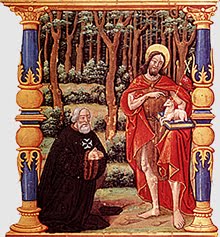Celebrating Easter with Mary our Mother and co-Redeemer.
If Mary could be tempted, as Jesus was in the desert, it was above all at the foot of the Cross – a temptation all the more insidious and painful, as Jesus Himself was the cause.
She believed in the promises, she believed that Jesus was the Messiah, the Son of God.
She knew that if Jesus had prayed for it, the Father would have sent “more than twelve legions of angels” (cf Mt. 26:53). But Jesus did nothing. If he were only to liberate Himself from the Cross, he would liberate her too, free her from her terrible pain.
Yet Mary does not cry out – “Come down from the Cross, save Yourself and me with you!” nor “You saved many others, why do you not now also save Yourself, O my Son?”
Mary keeps silent, “giving to the immolation of the Victim, born of her flesh, the consent of her love” so reads a text of Vatican II. She celebrates his Sacrifice with Him.
Raniero Cardinal Cantalamessa, preacher to the Papal Household. From ‘Mary Mirror of the Church’ 2002. (Trans. GPE.)
How could the Blessed Virgin, present in the first community of disciples (cf. Acts 1:14), be excluded from those who met her divine Son after he had risen from the dead?
Indeed, it is legitimate to think that the Mother was probably the first person to whom the risen Jesus appeared. Could not Mary’s absence from the group of women who went to the tomb at dawn (cf. Mk 16:1; Mt 28:1) indicate that she had already met Jesus? This inference would also be confirmed by the fact that the first witnesses of the Resurrection, by Jesus’ will, were the women who had remained faithful at the foot of the Cross and therefore were more steadfast in faith.
Indeed, the Risen One entrusts to one of them, Mary Magdalene, the message to be passed on to the Apostles (cf. Jn 20:17-18). Perhaps this fact too allows us to think that Jesus showed himself first to his Mother, who had been the most faithful and had kept her faith intact when put to the test.
Lastly, the unique and special character of the Blessed Virgin’s presence at Calvary and her perfect union with the Son in his suffering on the Cross seem to postulate a very particular sharing on her part in the mystery of the Resurrection.
A fifth-century author, Sedulius, maintains that in the splendour of his risen life Christ first showed himself to his mother. In fact, she, who at the Annunciation was the way he entered the world, was called to spread the marvellous news of the Resurrection in order to become the herald of his glorious coming. Thus bathed in the glory of the Risen One, she anticipates the Church’s splendour. cf. Sedulius, Paschale carmen, 5, 357-364, CSEL 10, 140f).
It seems reasonable to think that Mary, as the image and model of the Church which waits for the Risen One and meets him in the group of disciples during his Easter appearances, had had a personal contact with her risen Son, so that she too could delight in the fullness of paschal joy.
Present at Calvary on Good Friday (cf. Jn 19:25) and in the Upper Room on Pentecost (cf. Acts 1:14), the Blessed Virgin too was probably a privileged witness of Christ’s Resurrection, completing in this way her participation in all the essential moments of the paschal mystery. Welcoming the risen Jesus, Mary is also a sign and an anticipation of humanity, which hopes to achieve its fulfilment through the resurrection of the dead.
In the Easter season, the Christian community addresses the Mother of the Lord and invites her to rejoice: “Regina Caeli, laetare. Alleluia!”. “Queen of heaven, rejoice. Alleluia!”. Thus it recalls Mary's joy at Jesus' Resurrection, prolonging in time the “rejoice” that the Angel addressed to her at the Annunciation, so that she might become a cause of “great joy” for all people.
Saint John Paul II (Audience 21 May 1997, Trans. Vatican)













